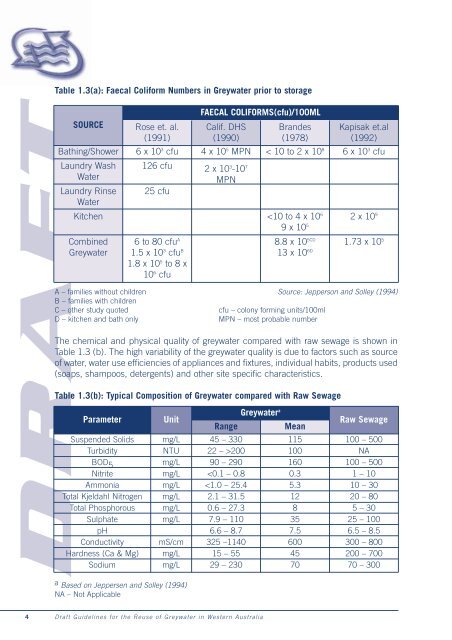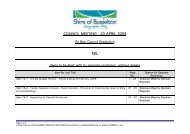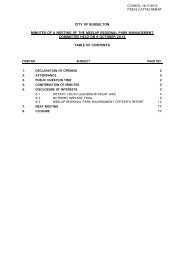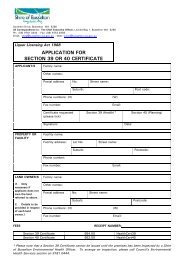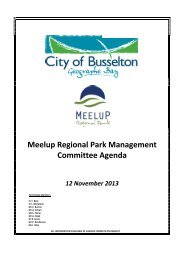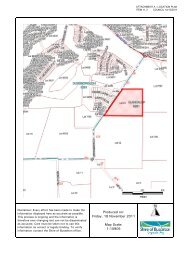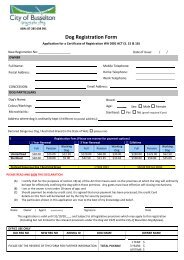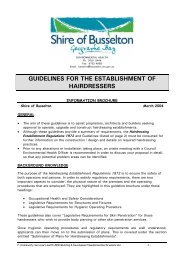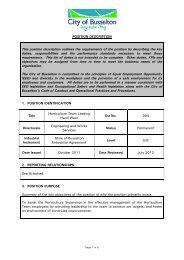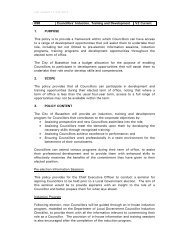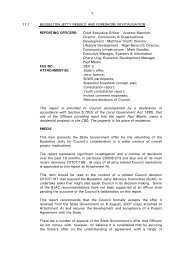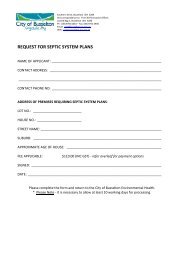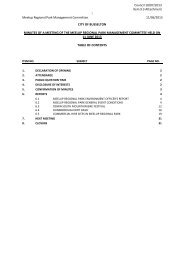Draft Guidelines for the Reuse of Greywater in Western Australia
Draft Guidelines for the Reuse of Greywater in Western Australia
Draft Guidelines for the Reuse of Greywater in Western Australia
Create successful ePaper yourself
Turn your PDF publications into a flip-book with our unique Google optimized e-Paper software.
Table 1.3(a): Faecal Coli<strong>for</strong>m Numbers <strong>in</strong> <strong>Greywater</strong> prior to storage<br />
DRAFT<br />
SOURCE<br />
Bath<strong>in</strong>g/Shower<br />
Laundry Wash<br />
Water<br />
Laundry R<strong>in</strong>se<br />
Water<br />
Kitchen<br />
Comb<strong>in</strong>ed<br />
<strong>Greywater</strong><br />
Rose et. al.<br />
(1991)<br />
6 x 10 3 cfu<br />
126 cfu<br />
25 cfu<br />
6 to 80 cfu A<br />
1.5 x 10 3 cfu B<br />
1.8 x 10 5 to 8 x<br />
10 6 cfu<br />
FAECAL COLIFORMS(cfu)/100ML<br />
Calif. DHS<br />
(1990)<br />
4 x 10 5 MPN<br />
2 x 10 3 -10 7<br />
MPN<br />
Brandes<br />
(1978)<br />
< 10 to 2 x 10 8<br />
The chemical and physical quality <strong>of</strong> greywater compared with raw sewage is shown <strong>in</strong><br />
Table 1.3 (b). The high variability <strong>of</strong> <strong>the</strong> greywater quality is due to factors such as source<br />
<strong>of</strong> water, water use efficiencies <strong>of</strong> appliances and fixtures, <strong>in</strong>dividual habits, products used<br />
(soaps, shampoos, detergents) and o<strong>the</strong>r site specific characteristics.<br />
Table 1.3(b): Typical Composition <strong>of</strong> <strong>Greywater</strong> compared with Raw Sewage<br />
Kapisak et.al<br />
(1992)<br />
6 x 10 3 cfu<br />
200<br />
90 – 290<br />


